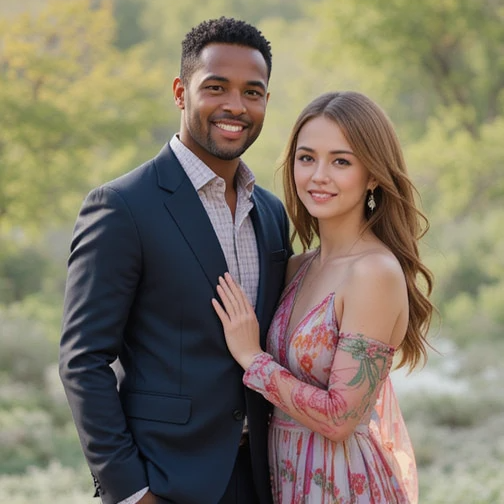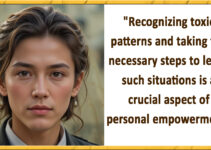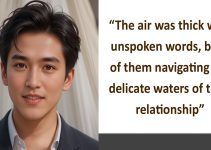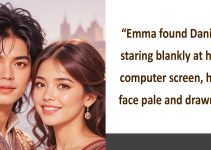



The Experiment Begins
In a sleek, glass-walled office in San Francisco, Dr. Evelyn Carter stared at the monitor before her. The results of the latest AI-driven matchmaking experiment had just been compiled, and the data was as promising as it was unnerving. The LoveSync algorithm, which she and her team had spent years perfecting, boasted a 92% compatibility success rate among its test subjects. But was compatibility the same as love?
Evelyn sighed and leaned back in her chair. Across the desk, her co-founder, Raj Patel, grinned triumphantly. “This is it, Eve. We’ve cracked it.”
“Maybe,” she murmured. “But I want to see it in action. I want to know if our algorithm can truly replace the messy, unpredictable chemistry of falling in love.”
Raj tapped the screen. “Then we launch the beta test. Let real people put it to the test.”
The Perfect Match?
Miles away, in New York City, Emma Brooks swiped idly through the dating app on her phone. She had tried everything—dating sites, blind dates, even speed dating. Yet, nothing clicked. So when she received an exclusive invitation to test a cutting-edge AI matchmaking service, she hesitated only for a moment before signing up.
The next day, her phone buzzed with a notification. LoveSync has found your perfect match.
His name was Daniel Rhodes. Thirty-two, a software engineer, avid reader, amateur guitarist. Their interests aligned perfectly, their personalities complemented each other with eerie precision.
Their first conversation was smooth, almost effortless. They liked the same obscure indie bands, had read the same novels, and even harbored the same secret love for pineapple pizza. It was uncanny.
“It’s like you already know me,” Emma texted.
“Maybe I do,” Daniel replied with a wink emoji.
Algorithmic Sparks
Their first date was at a cozy café in Brooklyn. As Emma approached the entrance, she recognized Daniel instantly. He looked just like his profile picture, yet something felt off. Was it too perfect?
They talked for hours, laughing at the same jokes, finishing each other’s sentences. Yet, as the evening wore on, Emma felt a strange hollowness settle in. There was no awkward silence, no unexpected surprises—just seamless, calculated harmony.
After the date, she called her best friend, Lisa. “It was great,” she said hesitantly. “But… I don’t know. It felt almost scripted. Like we were actors following a script written by an AI.”
Lisa chuckled. “Maybe that’s what love is supposed to feel like. No more heartbreak, no more confusion. Just perfect alignment.”
But was that really love?
Cracks in Perfection
Weeks passed, and Emma and Daniel’s relationship progressed flawlessly. No fights, no misunderstandings. Yet, Emma couldn’t shake the nagging feeling that something was missing.
One evening, as they cooked dinner together, Emma decided to test something. “What’s your biggest regret?” she asked.
Daniel paused, then gave a textbook response about wishing he had learned Spanish earlier. It was a safe answer—too safe.
“No,” she pressed. “Something real.”
He hesitated again. Then he smiled, but it didn’t reach his eyes. “I don’t think regrets are productive.”
That was the moment Emma knew. The algorithm had matched them on compatibility, but it had stripped away the raw, imperfect edges that made love real. She had found a partner who was perfect for her on paper—but love wasn’t about perfect alignment. It was about discovery, about learning someone in ways an algorithm never could predict.
Breaking the Code
Meanwhile, back in San Francisco, Evelyn watched Emma and Daniel’s case with fascination. The data indicated that they should be the ideal couple, yet the user feedback told a different story. A growing number of beta testers reported similar experiences—relationships that felt like simulations rather than genuine connections.
Raj frowned at the reports. “So, what do we do? Tweak the algorithm?”
Evelyn shook her head. “Maybe the problem isn’t with the algorithm. Maybe love can’t be solved by data alone.”
Choosing the Unpredictable
One evening, Emma met Daniel at their usual café. “I have to be honest with you,” she said. “You’re wonderful. But something’s missing. I feel like I know exactly who you are, but I don’t feel like I’m getting to discover you.”
Daniel exhaled slowly. “I feel the same way.”
Emma smiled. “Maybe that’s the problem. Love isn’t about knowing everything upfront. It’s about finding out, step by step.”
They parted amicably, realizing that true love isn’t just about the perfect match—it’s about the journey, the unpredictability, and the imperfections that make people real.
Evelyn read the final report from Emma and Daniel’s test and made her decision. LoveSync would continue to evolve, but it would never replace the chaotic, beautiful nature of falling in love.
Because in the end, love wasn’t an algorithm to be solved. It was a mystery to be lived.



